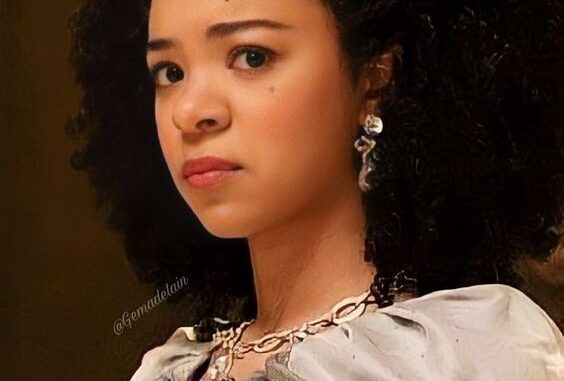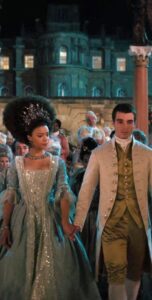
Gather round, dear gentle readers.
Bridgerton is back in the cultural zeitgeist thanks to its new prequel charting the rise to prominence and power of Queen Charlotte.
But it’s immediately clear, through the unmistakable narration of Julie Andrews, that this is not a history lesson.
Instead, Queen Charlotte: A Bridgerton Story is “fiction inspired by fact,” where all liberties taken are “quite intentional.”
Here’s what we know about the real Queen Charlotte.
Wait, do I need to watch Bridgerton before starting Queen Charlotte?
No, but it wouldn’t hurt, especially if you like the vibe of the show.
The six-episode prequel series goes back in time to explore how a young Queen Charlotte’s marriage to King George III sparked both a great love story and a societal shift.
It’s the origin story to the world of the Ton inherited by the characters in the two existing seasons of Bridgerton.
But the story also jumps forward to the Regency era where an established Queen Charlotte berates her adult children for failing to provide her a legitimate heir (thanks in part to her sons making plenty of illegitimate heirs.)
So while the first two seasons of Bridgerton aren’t required viewing, learning the backstory of characters we’ve come to know and love, including Lady Danbury, makes for a more satisfying watch.
What do we know about the real Queen Charlotte?
Born Sophia Charlotte of Mecklenburg-Strelitz, she was the youngest daughter of Duke Charles Louis Frederick of Mecklenburg-Strelitz and Princess Elizabeth Albertina of Saxe-Hildburghausen.

Mecklenburg-Strelitz was a small northern German kingdom in the Holy Roman Empire, and Charlotte was born and brought up at Untere Schloss (Lower Castle) in Mirow.
Born on May 19, 1744, Charlotte was just 17 when a 22-year-old King George of Britain succeeded to the throne in 1760.
Despite the pair never meeting, Princess Charlotte was considered an obvious choice for a wife for King George, so a party of escorts departed for Germany to bring her to England.
She really did marry within hours of arriving in the UK
Because this was the 18th century, Princess Charlotte was taken away by her brother, the Duke, who accompanied her on her voyage across the sea – a storyline that’s the same in the Netflix series.
At 9pm the same evening, within six hours of her arrival, Princess Charlotte and King George were married at the Chapel Royal, St James’s Palace.
Spoiler alert, but less than a year later Queen Charlotte gave birth to her first child, the Prince of Wales, who would later become King George IV.
The royal couple will go on to have 15 children together – nine boys and six girls – with 13 surviving into adulthood.
Was Charlotte really Britain’s first black queen?
The subject of Queen Charlotte’s ancestry gained renewed interest in 2017 when Prince Harry proposed to Meghan Markle, who is biracial.
Various outlets drew parallels between the Duchess of Sussex and Queen Charlotte, with one headline from People reading: “Meet Queen Charlotte, the Biracial Royal Who Made History 200 Years Before Meghan Markle!”
The theory had been popularized by one historian, but other scholars say it’s a myth.
Mario De Valdes y Cocom, who describes himself as “an historian of the African diaspora,” argued back in 1997 in a piece for PBS Frontline that Charlotte was directly descended from a black branch of the Portuguese royal family: King Alfonso III and his lover , Ouruana, a black Moor.
Valdes also pointed to certain portraits of Charlotte to support his idea, arguing some of her features were visibly African.
But other scholars have been highly skeptical of the theory, pointing to inconsistencies in the claim.
“The problem with the theory is that it’s been knocking around on the internet, reported on by the likes of The New York Times, and gained a veneer of respectability,” historian Lisa Hilton told Insider.
“But one can say there is absolutely no credible evidence that she was black.”
Ania Loomba, a professor of literature at the University of Pennsylvania, who also teaches histories of race and colonialism, told the Inquirer if a person was described as a Moor or “blackamoor,” it did not necessarily mean they were black.
“The word ‘blackamoor’ in Shakespeare’s time meant Muslim. It didn’t mean black necessarily,” she said. “Moors could be white from North Africa.”
In 1999, Valdes’s research was reported in The London Sunday Times and The Boston Globe, prompting Buckingham Palace to respond.
“This has been rumored for years and years. It is a matter of history, and frankly, we’ve got far more important things to talk about,” Palace correspondent David Buck told the Globe.
